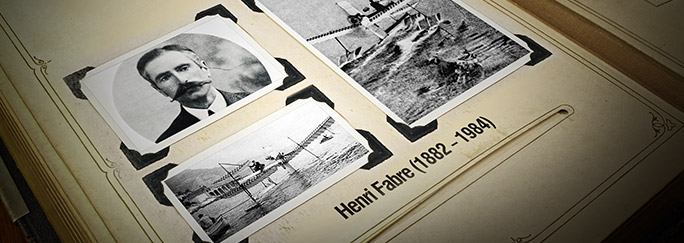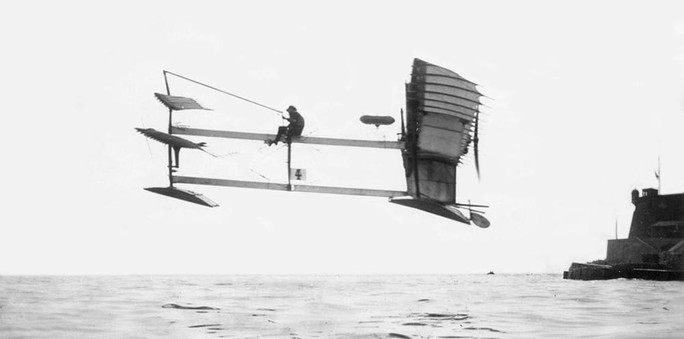-
![LANG-CODE-KEY]() LANG_NAME_KEY
LANG_NAME_KEY

Fly into history with a x2 Crew XP bonus, and discounts on aircraft used over aquatic environments!
|
|---|
|
BundlesAvailable March 25 04:20 PT / 07:20 ET
| |
|---|---|
$24.99
|
$24.99
|
Henri Fabre was born in Marseille in 1882. Since childhood, he dreamed of building an aircraft that would be able to ascend from and land on water. Motivated by his father’s promise to finance his experiments if he got a degree as an engineer, Fabre went to Paris for his studies and met other great aviators -- Breguet, Blériot, Farman and Voisin.
When Fabre returned home in 1906, he was fueled by stories of competitors. One competitor was Austrian Willhem Kress, who had been experimenting with a seaplane as early as 1901! Fabre immediately enlisted his father's promised support and began working on his own aircraft, building prototypes and starting a series of tests which involved pulling the aircraft a ship with a mechanical winch. While his floats proved stable enough to hold the aircraft, both the engine and propeller lacked power; Fabre's aircraft couldn't create enough lift to take off from the water’s surface.
Fabre didn’t lose hope, and some years later jumped at the chance to purchase one of the first Gnome 7-cylinder rotary engines produced by fellow French inventor Laurent Séguin. This 50 horsepower engine, (the most powerful at the time,) did the trick and Fabre's Hydravion finally took off for its first flight on March 28, 1910 in the Bay of Martigues, France. Fabre, who was piloting an aircraft for the first time in his life, flew approximately 500m at an altitude of a little over one meter. The Hydravion would take off three more times that day before inexperience finally caught up with Fabre and he scraped a protruding rock formation poking out of the water and seriously damaged his aircraft.

Henri Fabre flying his ‘Hydravion’ (seaplane) for the first time on March 28, 1910
Fabre had achieved his goal, which landed him both in the newspapers of his time and the record books. He went on to design floats for other aviation pioneers such as the Voisin brothers, who used his technology to perfect their own Canard glider, one of the first seaplanes used by the French Navy.